The Tree Project at Martin Luther King Jr. Park involved planting over 150 trees and shrubs in a newly renovated park with multiple athletic fields. Sausalito Beautiful led the project by gathering donations from 33 people, commissioning a landscape plan, and organizing volunteer planting days for all the trees and shrubs. This furthers our vision of a tree-lined park that provides shade, mitigates climate change, and enhances the beauty of the neighborhood. Come visit the park at the north end of Sausalito and enjoy the athletic facilities surrounded by trees!
Community Donations paid for the Trees
Thanks to an extraordinary response in Q4 2019, Sausalito Beautiful exceeded our $15,000 goal for fundraising. The funds went towards the trees themselves in addition to other planting materials such as compost, mulch, and posts. Remaining funds continue to be used to maintain the trees and beautify other aspects of MLK Park. For example, we plan to add at least one bench lining the walking path and add more landscaping at the entrances to the park.
All donors of $250 or more have been acknowledged on a single permanent plaque in the park. Donors of $500 or more were able to choose a specific tree as their memorial tree . Donors of $1000 or more chose a grove of several trees as their memorial.
Our total budget for both phases of tree planting was $50,000. The City of Sausalito has contributed half or $25,000, while Sausalito Beautiful has contributed $10,000 from our general fund to augment the $15,000+ raised in the community. Additional monies are going toward maintenance of the trees and other park amenities.
For more information on the donors, their memorial trees, and their dedications see our Donors & Dedications page.
Experts developed the Landscape Plan
Sausalito Beautiful commissioned Patrick Haesloop of Site Studio Landscape Architecture to develop the MLK Park landscape plan in consultation with other experts and stakeholders including:
- Mike Langford, Sausalito’s Director of Parks & Recreation
- Sausalito City Council & Planning Commission
- Southern Marin Fire Department
- Juan Ochoa from Bartlett Tree Service, Sausalito’s consulting arborist
- The two on-site schools: The New Village school and Lycée Francais
- Neighbors
We look forward to the trees maturing such that they provide shade, mitigate climate change, and enhance the beauty of the neighborhood. Look at the Landscape Plan for yourself, and learn about each of the 11 Species of Trees and Shrubs.
The species incorporated into the Tree Plan includes has taken into consideration a myriad of factors. On the aesthetic side, we wanted:
- A balance of evergreen and deciduous trees: the evergreens (Olive, Melaleuca, Chinese Elm, Cork Oak) give us year-round structure while the deciduous (e.g., Ginkgo, California Sycamore) give us gorgeous fall color.
- Different colors of green and leaf textures with a smattering of flowering trees in the mix, both white (Melalueca) and blue (Ceanothus).
- Mostly taller trees but several rows of shrubs (Ceanothus) to screen the businesses along Bridgeway
- Many California natives (California Sycamore, Ceanothus, Arroyo Willow), but also non-natives that have proven to do well in our area.
- Drought-tolerant trees except around MLK Park’s wet areas where we want the plants (Arroyo Willow, Weeping Willow) to soak up excess water.
- Some fast-growing trees (Willow, Chinese Elm) to fill out portions of the canopy quickly. Of course, these trees may not have a long life-span, but that’s a trade-off we’re willing to make.
We removed many potential species from consideration because they were undesirable for one reason or another. We wanted:
- No trees that are fire-prone: Technically, MLK Park is not in a Wildland-Urban Interface thus would *not* be subject to restrictions by the Fire Department, but we thought it prudent to avoid trees that ignite easily and burn intensely (e.g., cedars and pines).
- No trees that would block evacuation routes: Ingress and egress routes to the park are kept open, and the Fire Department gave us the okay in terms of disaster evacuation routes, especially given the two on-site schools.
- No highly allergenic trees: while probably no tree is completely “sterile”, we wanted trees that were not allergenic, especially given the on-site schools and athletic fields.
- No trees with invasive roots that might uplift the encircling walking path or bother users of the athletic fields.
Today, we appreciate many gorgeous full-grown trees around our fair city. But if we want to continue to enjoy them for years to come, we need to think ahead and plant trees now. Of course, the right trees in the right places. Future generations will thank us for being so forward-thinking.
Volunteers planted 134 Trees and Shrubs
In two phases, over 100 members of the Sausalito community planted 97 trees and 37 shrubs at Martin Luther King Park. Ages of participants ranged from 5 to 80+, including neighbors living nearby, Sausalitans who just love trees, and members of nearly every public and community benefit organization in town (City Council, Planning Commission, Parks & Recreation Commission, Sausalito Beautiful, Southern Marin fire fighters, Cub Scouts, Sausalito Woman’s Club, Lions Club, and Rotary Club). We want to thank both Goodman’s Building Supply and GSI Landscaping for their contributions of materials. A big THANK YOU goes to all who helped plant these trees and shrubs that will grace Sausalito’s largest park for years to come!
Sausalito Beautiful commissioned a landscape plan for the park, raised money to help pay for its implementation, and organized two community planting days. Our organization firmly believes that additional trees are needed to combat climate change, improve our ecosystem and beautify the community, so we always have our eyes out for planting opportunities. In addition to beautifying MLK Park, these additional trees and shrubs will muffle sound, soak up excess rainwater, provide shade on sunny days, help stabilize the soil, and act as a windbreak.
For Phase I in October 2019, volunteers planted 66 trees and 28 shrubs, just after the opening of the newly renovated park with its expanded playing fields and improved drainage. The new park also included an encircling walking path, and the Phase I trees were all planted outside that paved path. After the community planting day, a few additional trees were planted by the Parks Landscaping crew to complete the Phase I planting of 108 trees and shrubs.
For Phase II in February of 2022, volunteers planted an additional 31 trees and 9 shrubs, this time on the inside of the walking path, making sure that the trees did not interfere with the athletic fields. Because the grassy athletic fields are irrigated all year, no native trees were included in this phase because in general, California natives do not like summer irrigation.
The MLK Park tree planting was an ambitious undertaking and a truly stupendous accomplishment! Thank you one and all for your dedication to making Sausalito Beautiful.
A special thank you goes to our supporters:
- Sausalito Parks & Recreation Department
- Goodman Building Supply: donation of gardening gloves
- GSI Landscaping: lending wheelbarrows on short notice
- Bartlett Tree Services: expert tree advice
- Lise Ciolino, Sausalito Beautiful: Project Manager
2022 Phase II Tree Planting
2019 Phase I Tree Planting
Species Planted
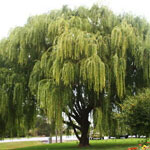 Weeping Willow (Salix babylonica): At MLK Park, these willows serve to soak up excess water and fill out portions of the canopy quickly. They are very quick growers ( 3′ or more per year) but fairly short-lived. Willows are deciduous and reach a height of 30-50’ with a spread of 30-50’.
Weeping Willow (Salix babylonica): At MLK Park, these willows serve to soak up excess water and fill out portions of the canopy quickly. They are very quick growers ( 3′ or more per year) but fairly short-lived. Willows are deciduous and reach a height of 30-50’ with a spread of 30-50’.
 Maidenhair (Ginkgo biloba): a deciduous tree revered for its beauty, fall color, and longevity (more than 150 years). The ginkgo is a living fossil, unchanged for more than 200 million years. They reach a height of 25-50’ and spread of 25-35′, with a yearly growth rate of 1-2′. Two varieties are planted at MLK: ‘Autumn Gold’ and ‘Princeton Sentry’.
Maidenhair (Ginkgo biloba): a deciduous tree revered for its beauty, fall color, and longevity (more than 150 years). The ginkgo is a living fossil, unchanged for more than 200 million years. They reach a height of 25-50’ and spread of 25-35′, with a yearly growth rate of 1-2′. Two varieties are planted at MLK: ‘Autumn Gold’ and ‘Princeton Sentry’.
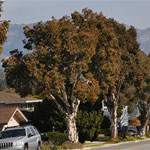 Paperbark Tea Tree (Melaleuca quinquenervia): a deciduous tree known for its striking cream-color exfoliating bark and showy yellow-white flowers. Paperbarks reach a height of 20-40’ and spread of 15-25’. Growing at a rate of 2′ or more per year, these trees typically have a longevity of 50-150 years.
Paperbark Tea Tree (Melaleuca quinquenervia): a deciduous tree known for its striking cream-color exfoliating bark and showy yellow-white flowers. Paperbarks reach a height of 20-40’ and spread of 15-25’. Growing at a rate of 2′ or more per year, these trees typically have a longevity of 50-150 years.
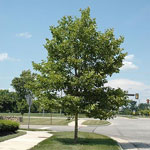 London Plane Tree (Platanus acerifolia): a deciduous tree whose signature ornamental feature is its brown bark which exfoliates in irregular pieces to reveal creamy white inner bark. This long-lived tree reaches a height of 30-80’ and spread of 20-50′, with a yearly growth rate of 3′.
London Plane Tree (Platanus acerifolia): a deciduous tree whose signature ornamental feature is its brown bark which exfoliates in irregular pieces to reveal creamy white inner bark. This long-lived tree reaches a height of 30-80’ and spread of 20-50′, with a yearly growth rate of 3′.
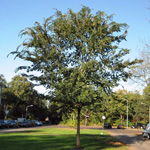 Chinese Elm (Ulmus parvifolia): an evergreen tree notable for its graceful habit and mottled bark. Chinese Elms reach a height of 40-60’ and spread of 50-70’. Growing at a rate of 3′ or more per year, these trees typically have a longevity of 50-150 years.
Chinese Elm (Ulmus parvifolia): an evergreen tree notable for its graceful habit and mottled bark. Chinese Elms reach a height of 40-60’ and spread of 50-70’. Growing at a rate of 3′ or more per year, these trees typically have a longevity of 50-150 years.
 California Lilac (Ceanothus): a native shrub known for its colorful show of blue flowers emerging in spring. Ceanothus reaches a height of 6’ and spread of 6′, with a yearly growth rate of 2′. Two different cultivars are planted at MLK: ‘Cynthia Postan’ and ‘Blue Jeans’.
California Lilac (Ceanothus): a native shrub known for its colorful show of blue flowers emerging in spring. Ceanothus reaches a height of 6’ and spread of 6′, with a yearly growth rate of 2′. Two different cultivars are planted at MLK: ‘Cynthia Postan’ and ‘Blue Jeans’.
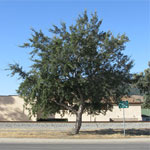 Cork Oak (Quercus suber): an evergreen tree whose bark is notable as being the source of commercial, sustainable cork harvests. These drought-tolerant oaks can reach a height and spread of 70’. Growing at a rate of 2-3′ per year, these trees typically have a longevity of more than 150 years.
Cork Oak (Quercus suber): an evergreen tree whose bark is notable as being the source of commercial, sustainable cork harvests. These drought-tolerant oaks can reach a height and spread of 70’. Growing at a rate of 2-3′ per year, these trees typically have a longevity of more than 150 years.
 Olive (Olea europaea): The ‘Swan Hill’ variety of olive planted at MLK is fruitless but otherwise has the graceful habit and drought-tolerance of fruitful olives. They reach a height and spread of 25-30’ and spread of 6′, have a yearly growth rate of 2′, and can live more than 150 years.
Olive (Olea europaea): The ‘Swan Hill’ variety of olive planted at MLK is fruitless but otherwise has the graceful habit and drought-tolerance of fruitful olives. They reach a height and spread of 25-30’ and spread of 6′, have a yearly growth rate of 2′, and can live more than 150 years.
 Arroyo Willow (Salix lasiolepis): a deciduous shrub used at MLK to soak up excess water and screen buildings. These native willows reach a height of 10-35′ with a growth rate of 3′ or more per year. As with most fast-growing plants, their longevity is relatively short at less than 50 years.
Arroyo Willow (Salix lasiolepis): a deciduous shrub used at MLK to soak up excess water and screen buildings. These native willows reach a height of 10-35′ with a growth rate of 3′ or more per year. As with most fast-growing plants, their longevity is relatively short at less than 50 years.
Frequently Asked Questions
We envision a green, leafy park with top-notch athletic fields being used from morning to night by people of all ages and athletic abilities. Athletes will be drawn to MLK for the high quality fields and parents will enjoy watching their childrens’ sports activities while sitting in the shade. We envision older folks strolling on the new encircling path while enjoying the leafy greenery and occasional shade.
MLK Park will be a place where neighbors are drawn in order to relax and be refreshed in the beautiful, green surroundings; a place where kids love their summer camp because of the combination of athletic facilities and cool, green respite under the trees, away from the sun. In 20 years, the next generation will thank us for having the foresight to plant such gorgeous trees.
Please look at the current MLK tree plan commissioned by Sausalito Beautiful and developed with Sausalito’s Director of Parks & Recreation. Imagine how gorgeous our park could be, and the benefits trees would bring. We hope you are as excited as we are!
Outside of the typical reasons to plant trees, many benefits arise from trees at the MLK Park site in specific.
- Trees serve as a wind break, enhancing the fairness and enjoyment of the softball, soccer, and lacrosse games at the park. The average mean daily wind speed in Sausalito varies from 7.1 to 9.4 miles per hour, which is significant to an athlete.
- All park-goers need the option to have relief from the sun, whether they are walking on the path, watching a game, or participating in a summer camp
- Traffic sounds from the nearby 101 highway and Bridgeway Boulevard can be quite loud, and trees muffle sound thereby allowing the athletes to communicate better during games.
- Excess storm water historically creates problems at this park, and trees can soak up excess rainwater.
- After regrading, the soils will be more unstable and trees will stabilize these soils especially on the new hillside.
- Athletes deserve clean air and oxygen, as do residents of the neighborhood
- The MLK site represents 50% of the public green space in Sausalito, and one of the few areas where fire concerns do not prevent a dense planting of trees.
As of February 2022, we completed the both phases of planting for a total of 97 trees and 37 shrubs. Thank you for all the volunteers who helped make the planting days a success!
Mature shade trees have been a prominent feature of MLK Park and Coloma Street for decades. All public green spaces need trees, even if athletic fields are a primary function of that green space. Athletes directly and significantly benefit from trees that serve as a wind break and sound barrier. People watching athletic games enjoy sitting in shade, and athletes of all ages and levels of intensity want protection from the sun. Several summer camps are headquartered at MLK Park—these camps are much less interesting when kids are forced to be inside because there is no protection from the heat and UV rays. Neighborhood kids use the park to play pickup soccer and frisbee, then want to flop on the ground in the shade to rest. Trees are definitely needed in this multi-purpose park.
Athletes come in all shapes, sizes, ages, and desired level of activity—but their goals are similar: increased physical health, mental health and camaraderie—all of which are enhanced by trees. For those who cannot sustain high levels of activity but want to use the encircling walking path or the new age-friendly athletic equipment, trees have proven physical and mental benefits.
The majority of the trees in Sausalito Beautiful’s Tree Plan lie outside the walking path encircling the athletic fields, thus are in no danger of interfering with athletic activities. In fact, our first phase planting will only involve those trees outside the path. After the athletic fields are marked, the design team along with the Parks & Recreation Director will verify in-situ the rest of the trees inside the path to ensure that no athletic activities are compromised.
Historically, mature shade trees have been a prominent feature of MLK Park. The site held Sausalito’s grade school and athletic fields, and had trees planted all around the edges and at strategic spots. Over the years, the site has been used in different ways and now holds two schools, athletic fields, several businesses, basketball courts, pickleball courts, and tennis courts. Residents and park users have seen some trees die over the years, yet look to the renovation as an opportunity to plant the right trees in the right places in order to beautify and enhance their neighborhood.
No one would confuse MLK Park with Yosemite Park, but trees are still needed for functional, environmental, health, and aesthetic reasons.
When we were raising money to plant the trees, people had an opportunity to memorialize a loved one, give the gift of a tree, celebrate a milestone, or honor someone with a tree simply because they cherished nature. For a donation of $500 or more, one could dedicate a tree with the dedication text being identified on on a single plaque at MLK Park.
A plaque, which commemorates the donors has been inset in stone and placed just west of the athletic fields . The donor-specific trees are identified on the Sausalito Beautiful website, and will be filed with the City of Sausalito.
Several cork oak trees were planned along the hillside north and upslope from the fields. Oaks are gorgeous trees, are native to this area, and fit in well with the Sausalito tree-scape. Unfortunately, our native oaks would not do well on the flat grassy areas at MLK because these will be irrigated regularly for the athletic fields. Oaks hate receiving summertime water—fungal diseases such as oak root fungus (Armillaria mellea) and crown rot (Phytophthora spp) are often caused by high soil moisture and can kill the tree.
While planting fruit trees may sound like a noble pursuit, they are not the best choice for urban public landscapes. Fruit and nut trees tend to be very messy, with dropped flowers and fruit, which can become a hazard for athletes. Rotting fruit can attract insect pests, and inspire children to use them as projectiles. In addition, fruit trees often need more careful pruning, spraying and fertilizing.
Unfortunately, conifers such as pines, cypress, cedars and firs are thought to be more fire-prone than most deciduous trees and we wanted the new trees to follow the most up-to-date firesafe standards. Several broadleaf evergreen species (Olive, Melaleuca, Chinese Elm, Cork Oak) provide year-round green canopy at MLK, but they are more fire resistant than conifers, whose high resin content ignites quickly and burns intensely. Broadleaf evergreens have tough leathery leaves that will scorch before catching fire. Considered even more fire safe are deciduous trees whose thin, moist leaves simply shrivel when exposed to extreme heat instead of spreading fire.
For more information on trees in a fire-safe landscape, read this article in Pacific Horticulture. Here is the List of fire-safe and fire-prone trees as specified by Fire-Safe Marin.
It’s often very disappointing to see mature trees being taken down! In order to fix the drainage and enlarge the playing fields at MLK, however, some healthy trees needed to be removed. For example, fixing the drainage required regrading the entire field but the new soil level would not be appropriate for many existing trees.
In addition, over the years, several trees were not in very good health, perhaps they weren’t the right type of tree in the right place. Other trees had died years ago and just their stumps remained.
All told, 44 trees and stumps were removed at MLK for the renovation—so we needed to replant those trees and add even more where it made sense.
Fires are a perennial hazard in California, and but that doesn’t mean we shouldn’t plant trees! Much of Sausalito is located in areas called the Wildland Urban Interface (WUI), in which fires are especially difficult to fight thus the fire department has specific recommendations for planting in these areas. MLK Park is one of the largest non-WUI in Sausalito, thus offers the greatest opportunity to plant trees in our city.
While the Marin Fire Marshall is asking residents in WUI areas to keep tree branches at least 10’ apart on flat land (and 30’ apart on a moderate slope), this does not apply to MLK Park because it is not in a WUI. In fact, since residents in WUI areas are being advised to remove trees that are too close, we have an obligation to plant lots of trees in the non-WUI areas where it makes sense.
All the species of trees planned for MLK Park have been approved by the Southern Marin Fire Department, even as being appropriate for WUI areas—thus the MLK trees meet a stricter standard than required.
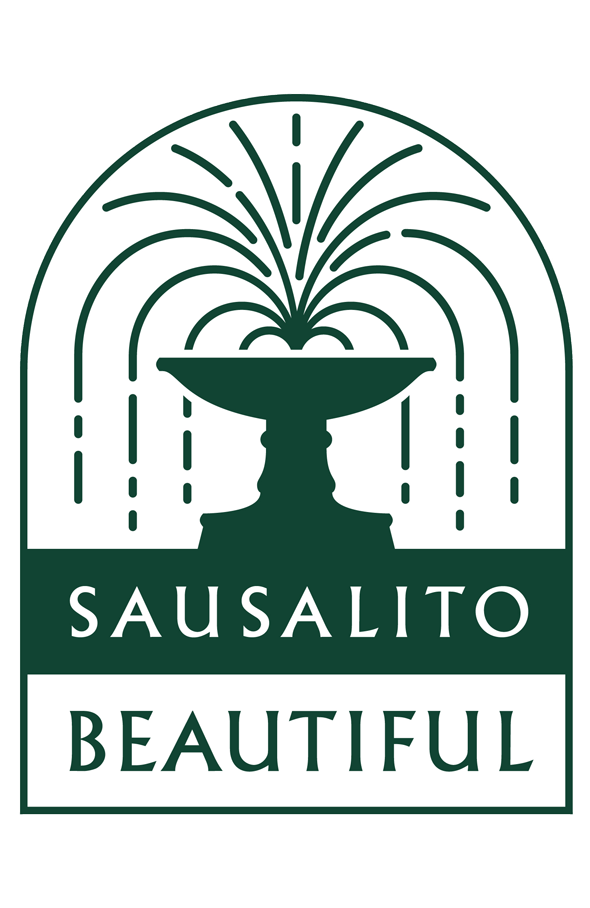
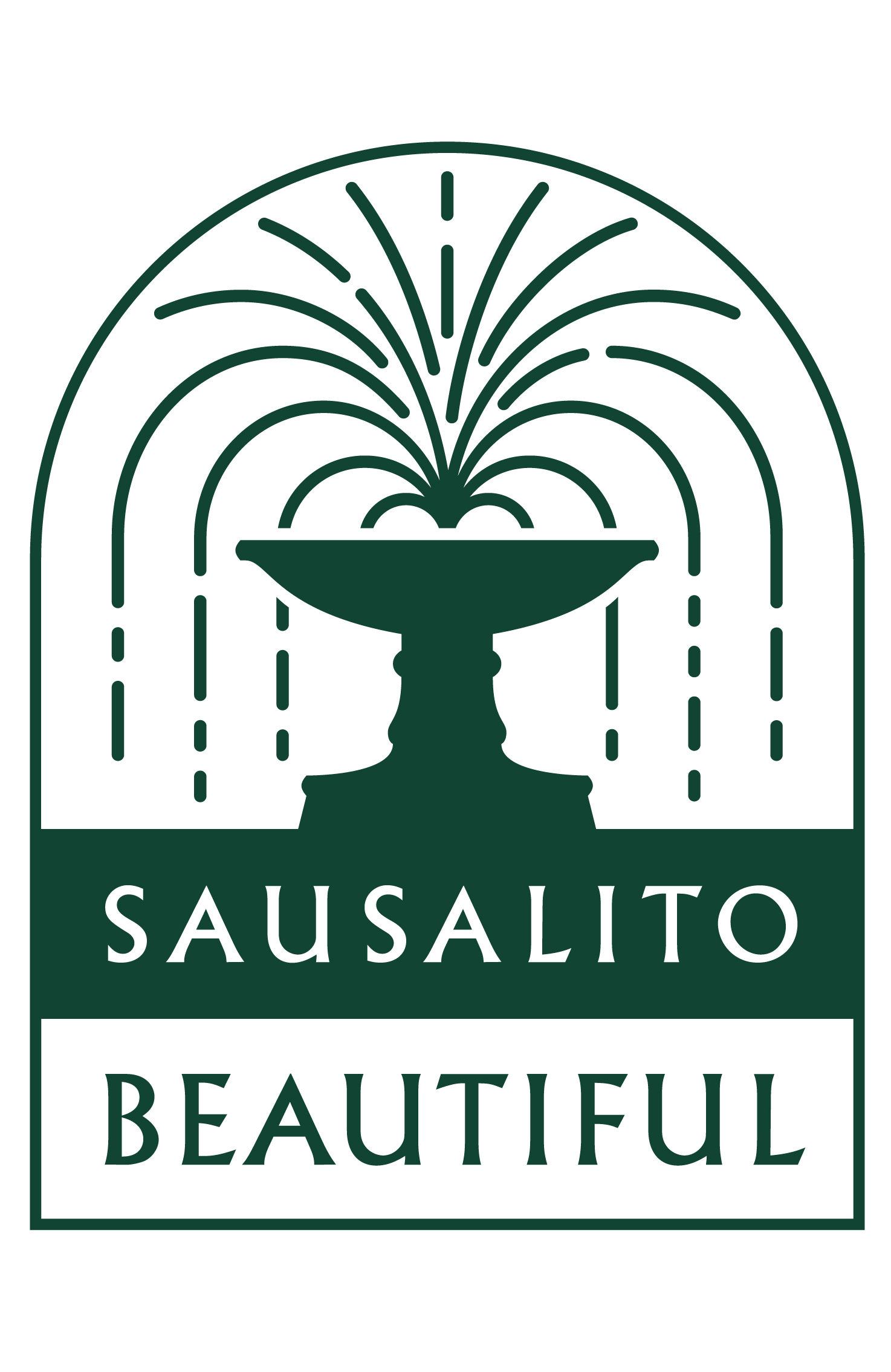

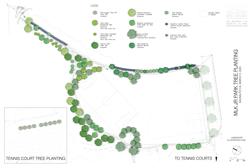

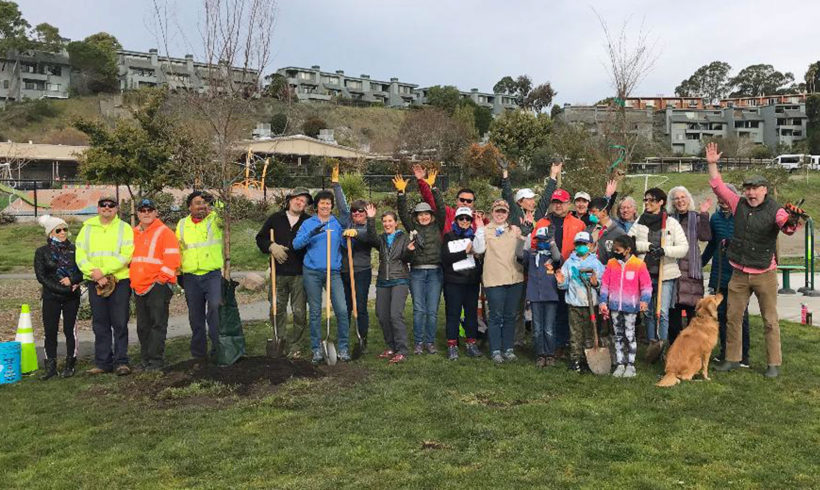





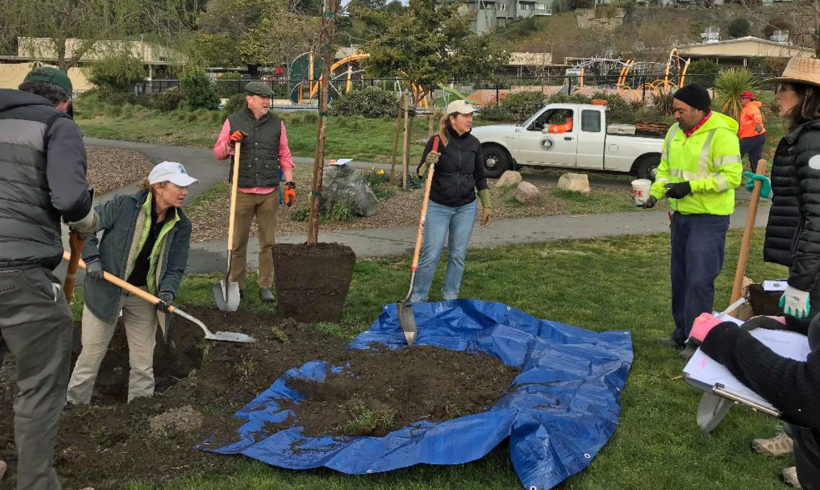












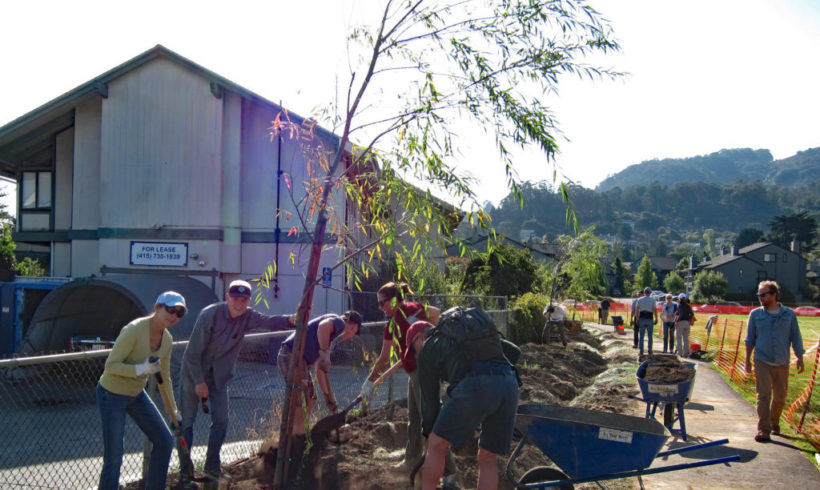
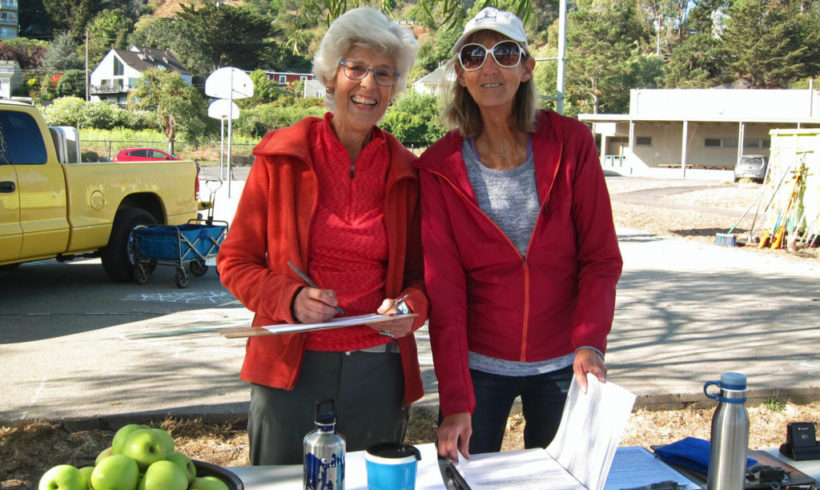





Leave a Reply